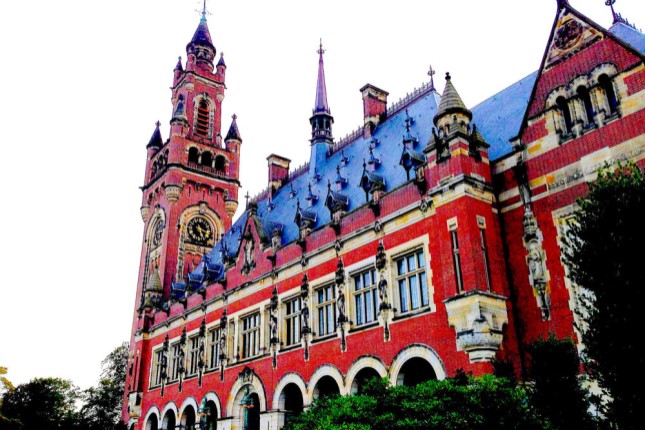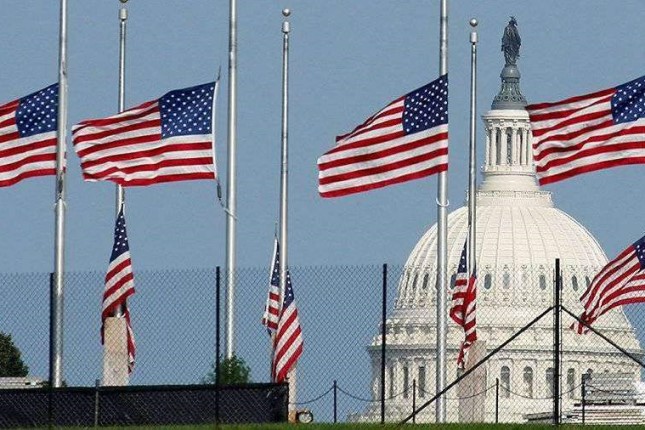The Hamas-Israel War, as it is portrayed by international media, reflects very poorly the realities in the region and even less the structural forces that led to the disaster.
In contrast to the standard narrative, the Hamas war is manna from heaven to Benyamin Netanyahu’s far-right government. Netanyahu himself has contributed to the expansion of Hamas since the 1990s.
With a population of over 2 million on some 365 square kilometers, the Gaza Strip is one of the world’s most densely populated areas and “largest open-air prison.” After the 1948 Arab-Israeli War, it became an Egyptian-administrated territory. Following the 1967 Six-Day War, it came under Israeli occupation.
The precursor of Hamas, Al Mujamma al Islami (“The Islamic Center”), was established in the Israeli-occupied Gaza in the 1970s under the auspices of the Palestinian Muslim Brotherhood.
One of their adherents was the wheelchair-bound Sheik Ahmed Yassin, the future leader of Hamas. Yassin concentrated the Mujamma’s activities on religious and social services. Ironically, Israeli authorities actively supported its rise, when their main antagonist was the late Yasser Arafat’s Palestinian Liberation Organization (PLO).
While PLO operatives in the occupied territories faced brutal repression, the Islamists affiliated with Egypt’s banned Muslim Brotherhood were allowed to operate in Gaza. Israelis hoped to use the Islamists against PLO.

2009 map of Gaza Strip. Photo: Gringer, Country Borders: United Nations Office for the Coordination of Humanitarian Affairs 2009 / Wikimedia Commons / CC BY-SA 3.0.
Yassin was jailed in 1984 on a 12-year sentence, but released only a year later.
Around the same time, Netanyahu first made his mark in the United States, particularly when he served as the Israeli ambassador to the U.N. In his book Fighting Terrorism (1986), he offered lessons on “how democracies can defeat domestic and international terrorists.”
Fast, smart and slick, he represented a new generation of Israeli politicians trained by American PR experts and his former employer, global consultancy BCG. To the right-wing Likud Party, the ambitious politician was very welcome.
Launched in 1988 amid the first intifada (uprising), Hamas has always refused to accept the existence of the Israeli state. When the peace process began between Israel’s Prime Minister Yitzhak Rabin and Arafat, Yassin was again in prison.
Hamas launched a campaign of attacks against civilians, which contributed to the rise of Netanyahu and the Israeli far-right in 1996.
Intriguingly, Netanyahu, as prime minister, ordered Yassin to be released from prison (“on humanitarian grounds”), despite his life sentence. He seems to have relied on the Islamists to sabotage the Oslo Peace Accords. After having expelled Yassin to Jordan, Netanyahu allowed him to return to Gaza as a hero in late 1997. Until his killing in 2004, Yassin initiated a wave of suicide attacks against Israelis.
Yet, as Netanyahu told his Likud Party’s Knesset members in March 2019, “anyone who wants to thwart the establishment of a Palestinian state has to support bolstering Hamas and transferring money to Hamas. This is part of our strategy- to isolate the Palestinians in Gaza from the Palestinians in the West Bank.”
In the 1990s, as part of the Oslo Accords, most of Gaza had been handed over to the Palestinian National Authority, alongside the Israeli settlements, which were evacuated in 2005, despite intense opposition by Israeli far-right.
In 2007, after a legitimate Hamas election victory that rankled both the West and Fatah, the Islamist group took over and began administering Gaza. That led both Israel and Egypt to impose a land, sea and air blockade, which has devastated the poor, ailing economy.
Toward Gaza’s Catastrophe?

Chief of General Staff Lt. Gen. Eisenkot leads an Israeli military delegation in Auschwitz-Birkenau on Holocaust Remembrance Day, 2017. Photo: Amit Elkayam / IDF Spokesperson’s Unit / Flickr / CC BY-NC 2.0.
Before the global pandemic, Gazan Palestinians organized widespread protests demanding Israel to end the blockade and address the Palestinian-Israeli conflict. Already two years ago, Gaza’s economy was on the verge of collapse. Yet, those interests that had most to gain from such a humanitarian crisis allowed it to proceed to its inflection point.
The final solution of Netanyahu government’s far-right seems to be the devastation of Gaza and the twisted hope that this would cause a mass emigration of Gazans away from the Israeli border. Hence, the preference for the Dahiya Doctrine, outlined by former IDF Chief Gadi Eizenkot in the 2006 Lebanese War and in the 2008-09 Gaza War. It is premised on the destruction of the civilian infrastructure of “hostile regimes.” “What happened in the Dahiya quarter of Beirut in 2006 will happen in every village from which Israel is fired on… We will apply disproportionate force on it and cause great damage and destruction there. From our standpoint, these are not civilian villages, they are military bases… This is not a recommendation. This is a plan. And it has been approved.”
Scholars of international law have called it “state terrorism.” In the view of the U.N., it is a “carefully planned” assault intended “to punish, humiliate and terrorize a civilian population.”
In Gaza, it looks increasingly like a war crime of historical magnitude.
After the Hamas offensive, Eisenkot was appointed as a minister without portfolio in Netanyahu’s war cabinet.
In the first six days of the War Israel dropped 6,000 bombs on Gaza. That’s almost the number of bombs the U.S. used in Afghanistan in one year. To understand the intensity of such bombing, it is vital to recall that Afghanistan is almost 1,800 larger than the besieged Palestinian enclave. And that bombing is just a prelude to the ground assault.
If the Hamas War threatens to exacerbate Israel’s social and economic tensions, it risks turning Gaza into a desert and the West Bank into a Jewish suburbia.
Main photo: U.S. Secretary of State Antony Blinken with Israeli Prime Minister Benjamin Netanyahu in Tel Aviv on Oct. 12 © State Department / Chuck Kennedy / Public domain.
Source: Consortium News.
































